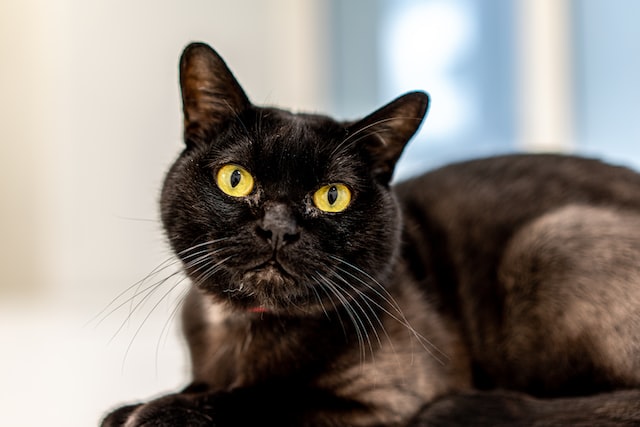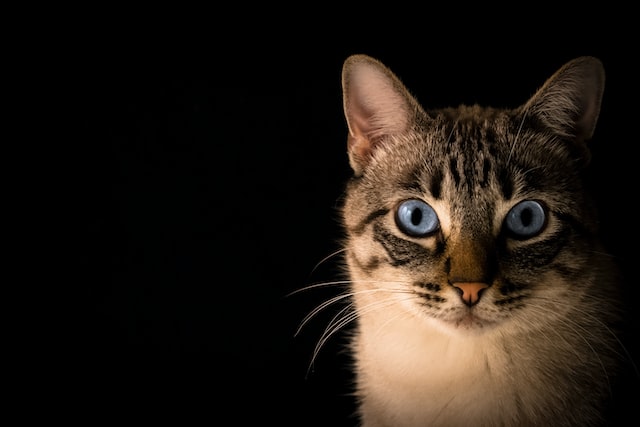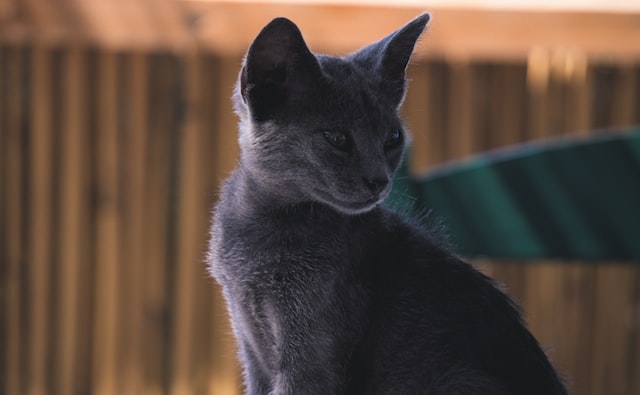A kitten may be chosen at an earlier stage but, ideally, it should not be taken to its new home until it is about eight weeks of age. This is not a hard-and-fast rule, however, and a kitten may be had at a younger age (from five weeks onwards) as long as it has been taught to lap milk and feed independently on solid food. Much depends upon the number of kittens in a litter. If it is a large litter (six or seven), the kittens are likely to be less advanced at a comparable age than those from a small litter. Obviously, a younger, smaller kitten will require even more special care when it arrives in its new home to ensure that it will thrive.
One or two preparations should be made before the kitten is brought home. A supply of food is, of course, needed. It is best, at first, to find out what the kitten has been used to eating and to buy a supply of the same kind of food. This is one factor that can then remain constant in the kitten’s life in the bewildering business of leaving its familiar surroundings and entering a new home. Familiar food is likely to prove reassuring to the kitten, encouraging it to eat and helping with the settling-in process. Two suitable bowls or containers are required, one for food and the other for fluids. Old saucers have often been used for the purpose in the past and are quite suitable. Some people prefer, however, to purchase the shallow, plastic feeding bowls that are on sale in pet shops, and these have the advantage of being non-breakable and should therefore last for the whole lifetime of the cat.
A suitable container is needed that can be used as a litter tray. There may be something suitable in the home, garage or garden shed, but many people prefer to purchase a litter tray from a pet shop. This is a rectangular-shaped shallow box, usually about 6V2 centimeters deep, 30 centimeters long and 20 centimeters wide and made of plastic. It is lined with newspaper and then filled with a suitable material that is used by the cat for defecation and urination. Commercial cat litter can be purchased, and this consists of small nodules of fuller’s earth or clay. Other suitable materials are sand, peat, soil, shredded bark or chippings or cut-up newspaper. The best material to use is that which can be disposed of by being burnt as this is both hygienic and also destroys the eggs of certain internal parasites in the event of these being present.
The kitten needs to be provided with its own place in which to sleep, and there are many different types of bed or basket to choose from in pet shops. For a young kitten, however, a strong cardboard box with fairly high sides but with part of one cut out to make a door is just as suitable. It can be lined first with layers of newspaper and then an old cushion, blankets or other suitable coverings, and these should be washed frequently. Alternatively, a wooden or cardboard box can be laid on its side to make a roofed bed, which has the advantage of screening out any draughts and giving an added feeling of security. The bed should be placed in a warm, safe place near where the members of the household spend most of their time. It has to be said that once the kitten has settled in and grows to adulthood, it will probably suit itself as to where it sleeps. Cats like to seek out the warmest, sunniest and most comfortable spots, irrespective of their official bed or basket.
It is worthwhile right at the start to invest in an elasticized cat collar (which will ‘give’ if it should become caught in something), with an attached disc engraved with some means of identification. Obviously, if the cat strays from home at some stage, there is a much greater chance of it being returned if it wears a collar carrying an identification disc. Some owners like to attach a little bell to the collar to lessen the cat’s success in catching garden birds.
There is likely to be great excitement in a family with children when the day comes to bring home the new kitten. It is essential to resist the temptation just to carry the kitten, even if it is only out to a car. A kitten may look helpless, but if it becomes frightened, as may be the case when it is taken out of its familiar, surroundings, it can easily slip out of a person’s hands and run away. It would, of course, be dangerous to have a kitten running loose in a moving car. Hence a box of some kind is needed for transport, and a strong cardboard one with high sides is perfectly adequate for a kitten. It needs to be lined with a suitable warm covering (e.g. newspaper and an old towel) and the top should be folded down to make a lid. Some holes should be made in the flaps of the lid for ventilation before leaving home.
Alternatively, two boxes can be used, one slightly larger than the other. The larger one needs to have holes made in the base and is inverted over the smaller one to make a lid. The smaller one should be warmly lined, and once the kitten is safely inside the two boxes can be secured together with string. Some people prefer to invest in a manufactured ‘cat carrier’ basket, which can be purchased from a pet shop. This might seem to be a rather expensive item but will certainly come in useful throughout the lifetime of the cat for visits to the veterinary surgery, etc. A cardboard box is not suitable for the transport of an adult cat as it is not strong enough. Unfortunately, the whole experience of being transported to a new home is likely to be an upsetting one for the kitten. All that can be done is to make sure that the kitten is safe during the journey and to minimize the trauma as far as possible.









